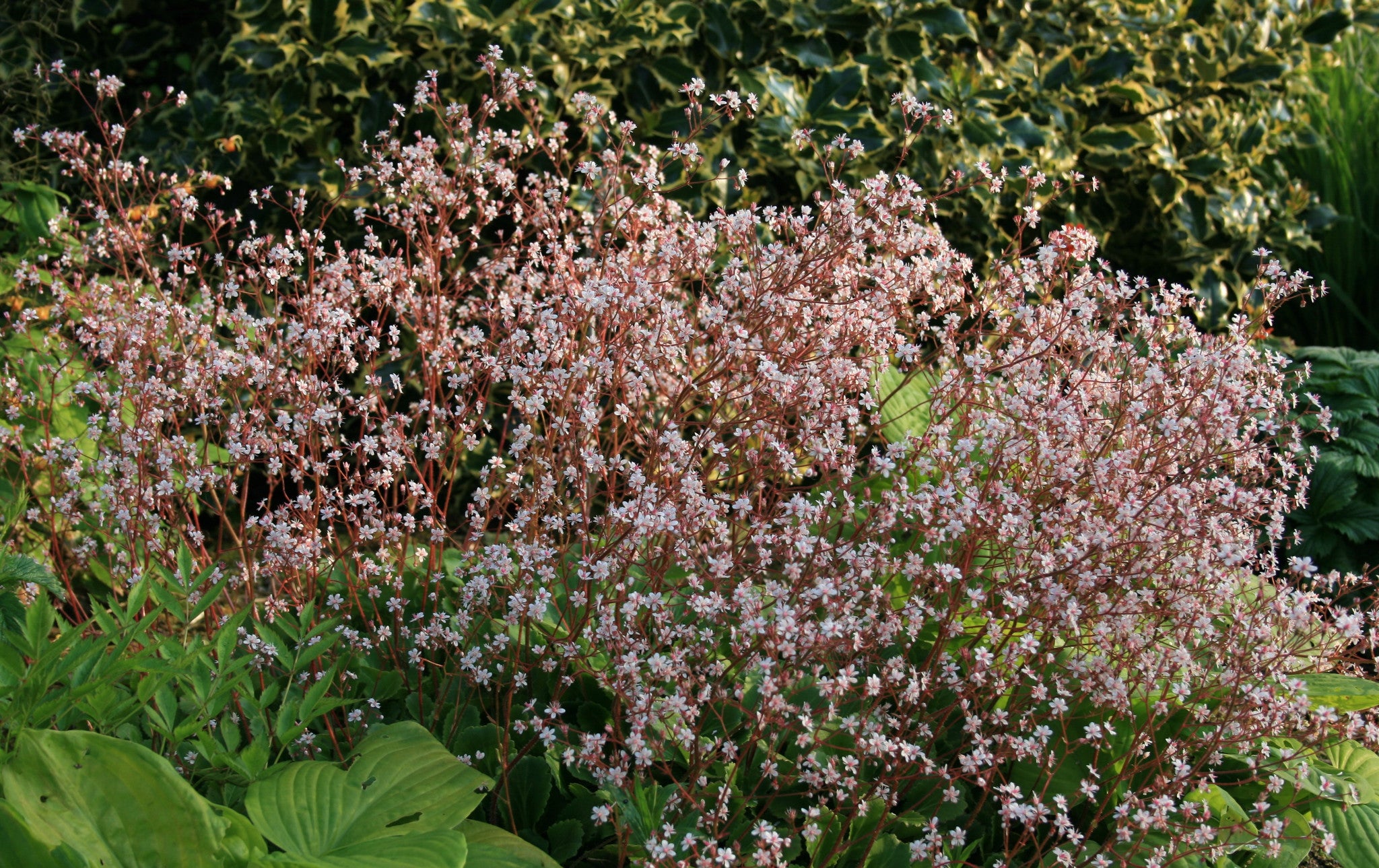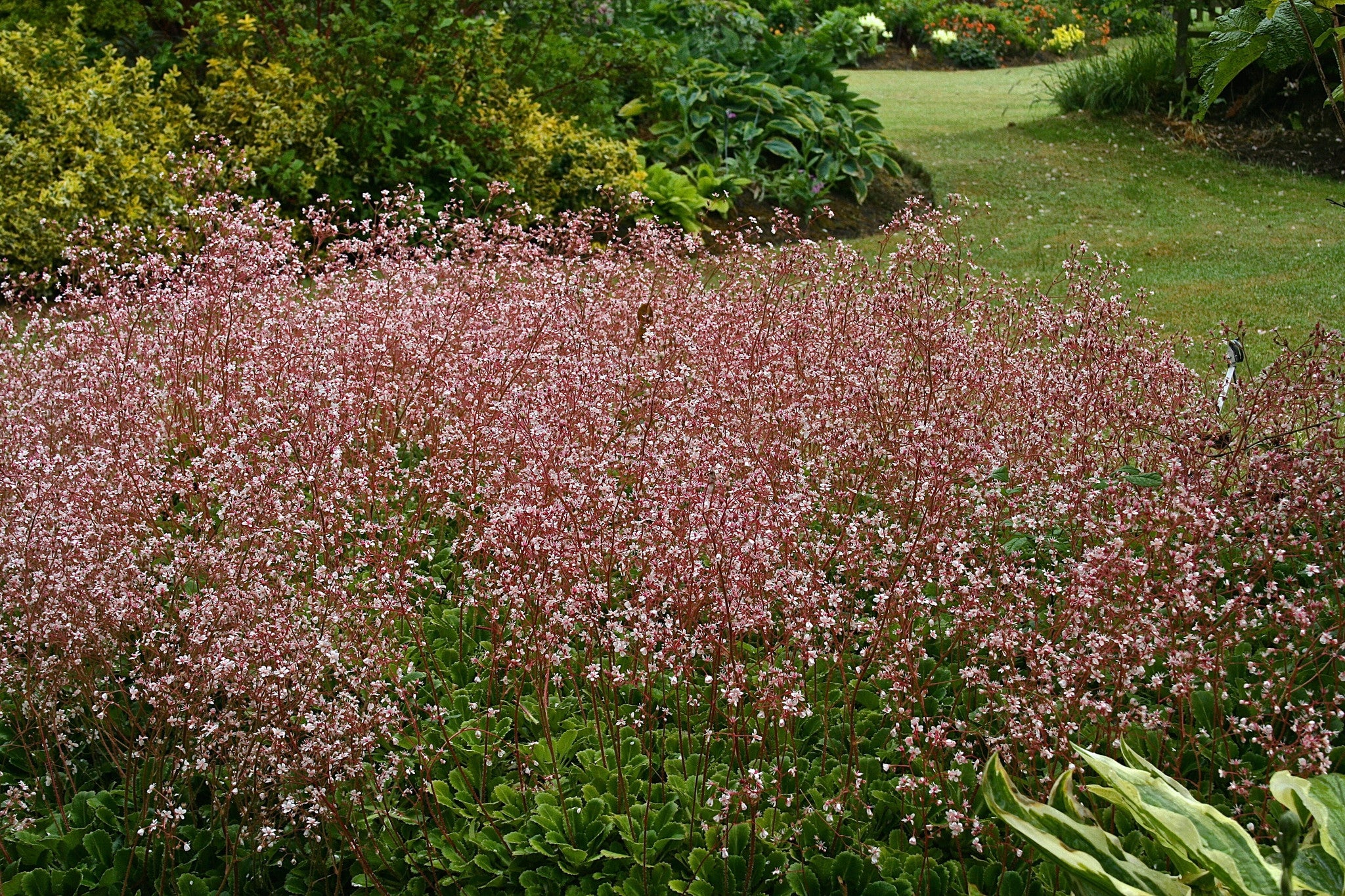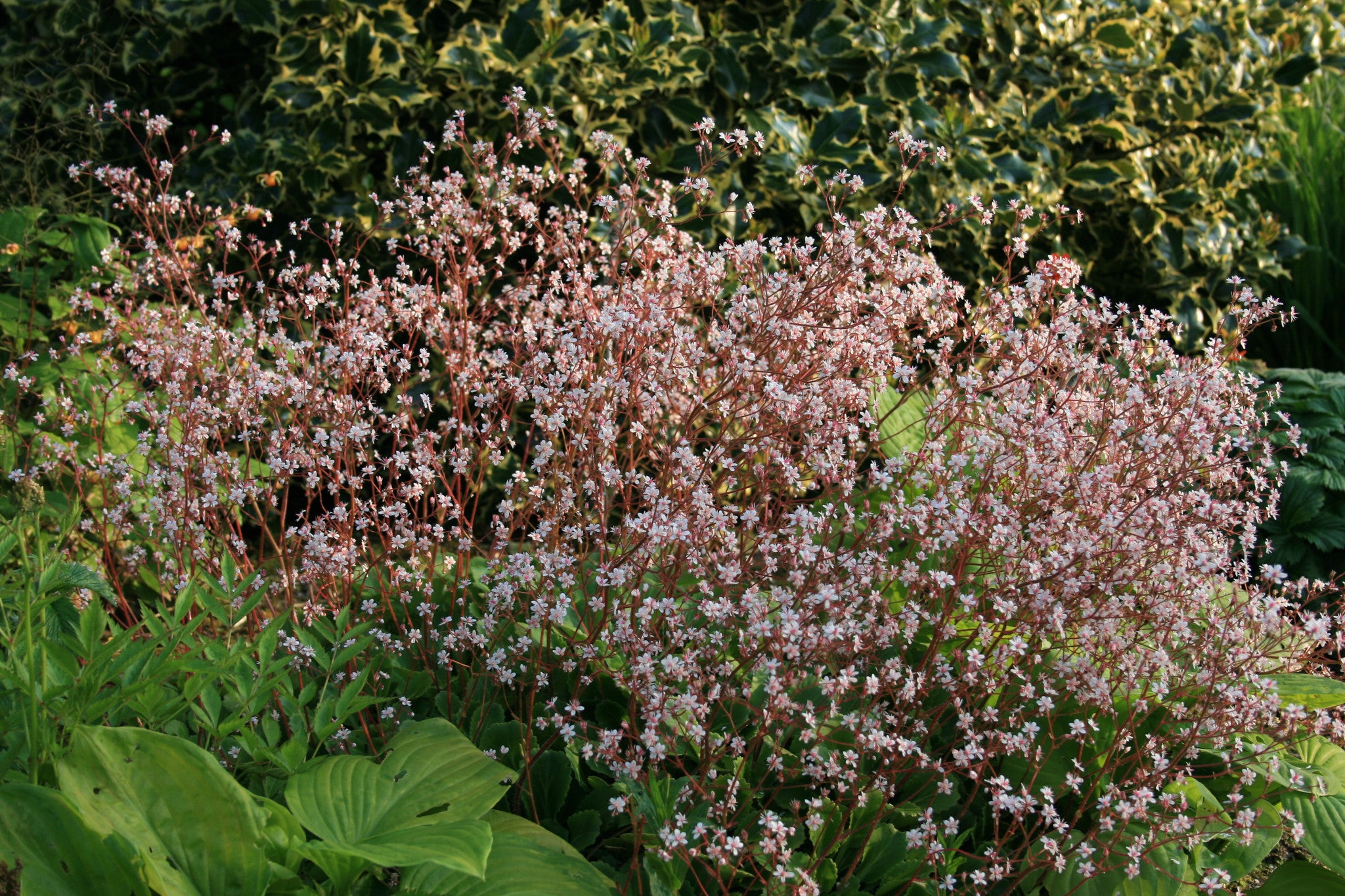Saxifraga x urbium (11)
Approx. 0.5 litre pot
About this cultivar:
Saxifraga x urbium is, we believe, the "true" 17th century London Pride; a hybrid between umbrosa (Spanish), and spathularis (Irish). Great groundcover with a mass of small pale pink rosette flowers. Loves neglected spaces. Bishop Walsham How (1823–1897) wrote a poem to the flower rebuking it for having the sin of pride. When told the flower had the name because Londoners were proud of it he wrote another poem apologising to it! A song by Noël Coward, celebrating London Pride and the flower - London pride, was popular during World War II.
- Position: Full sun, partial shade
- Soil: Almost any soil
- Flowers: June, July, August
- Other features: Grows well in Ballyrobert, Suitable for Container
- Hardiness: Fully hardy, grows well in Ballyrobert
- Habit: Clump forming
- Foliage: Evergreen
- Height: 15 - 25 cm (0.5 - 0.8 ft)
- Spread: 15 - 25 cm (0.5 - 0.8 ft)
- Time to full growth: 2 to 5 years
- Plant type: Herbaceous Perennial, Alpine or Rockery
- Colour: Green, white, red
- Goes well with: -
About this genus:
Saxifraga is the largest genus in the family Saxifragaceae, commonly known as saxifrages or rockfoils. The Latin word saxifraga means literally "stone-breaker", from Latin saxum ("rock" or "stone") + frangere ("to break"). It is actually thought to indicate a medicinal use for treatment of kidney stones, rather than breaking rocks apart!
The genus Saxifrage is a very diverse genus with a wide range of semiperennial to perennial plants, covering some 480 species in total. Saxifrages can be found from the greater part of the temperate and sub-arctic zones of the northern hemispheres with some "exotic" outposts in Ethiopia, Mexico and the Arctic region. Several subalpine species from dryish spots in mountainous regions have succulent, usually nicely glaucous leaves in dense rosettes and make very dense, floriferous clusters with time. Most Saxifrage are best grown in small crevices filled with well drained soil in full sun to part shade in the rock garden. e have most of ours stuck in walls and nook and crannys. However we also have a few at the front of the border! A few of the bigger one can tolerate a lot of moisture.






